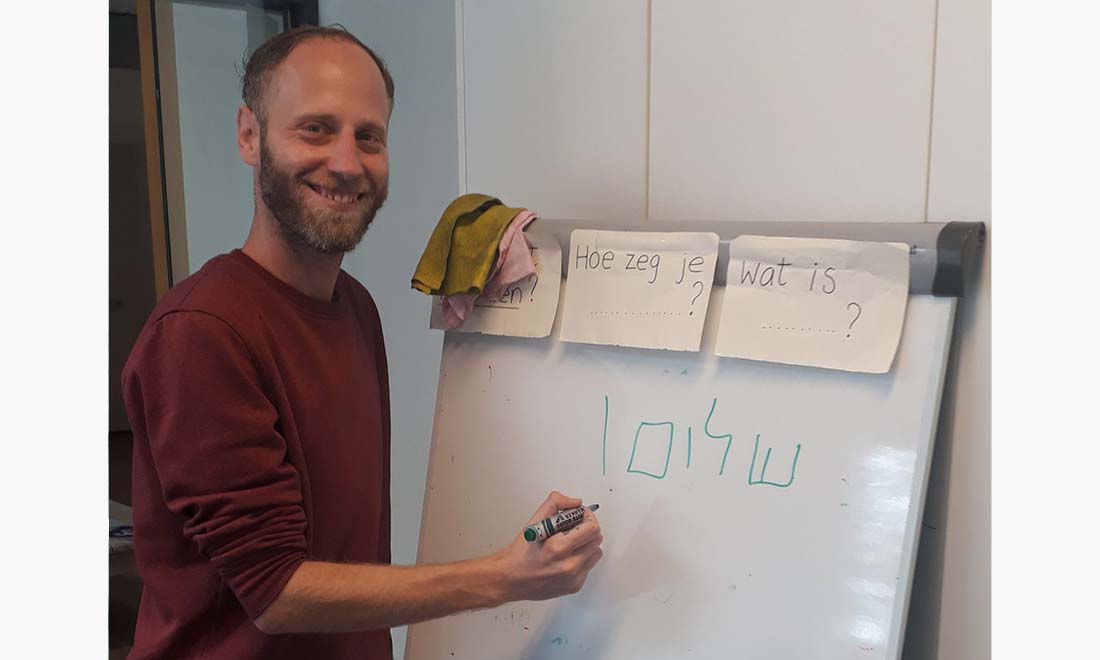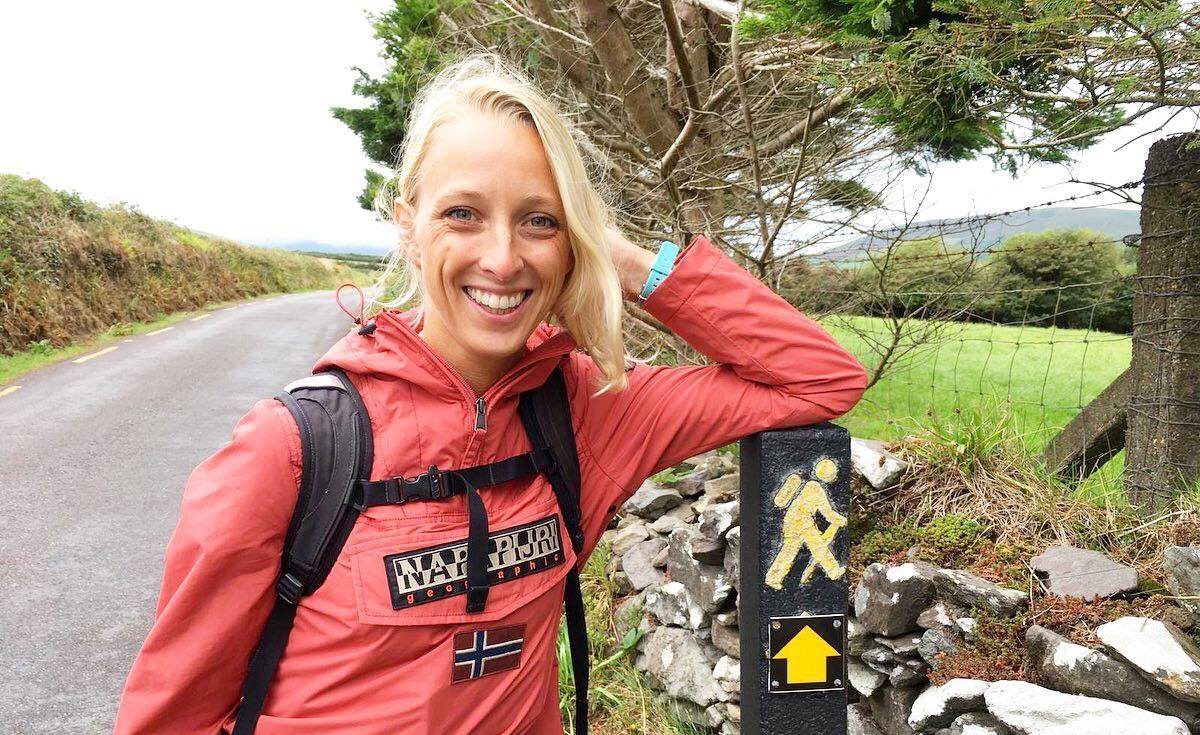Ani ohev shokolad! Ani ohev pitza! Ma ata ohev? Chances are big that our Hebrew teacher Dor Melichson will ask you what food you like in your first lesson – and you don’t even need to know a lot of Hebrew to give a correct answer.
Dor has been teaching at Taalhuis for the past six months. For our Meet the teacher-series, we talked with him about his teaching, the hardest and easiest parts of Hebrew and the way he gives his lessons a personal touch, especially when it comes to the use of gender.
Could you please introduce yourself?
I’m Dor, 38 years old and a Hebrew teacher in Amsterdam. I ended up at Taalhuis Amsterdam after I a friend told me they were looking for a Hebrew teacher. When I had my job interview it was a match: my own teaching style corresponded very well with the communicative and interactive approach of Taalhuis. I also love that the atmosphere is very free. I can bring my own materials and do what I think is useful.
What do your lessons look like?
I usually start my first lesson with giving a few phrases the students can use right away. I tell them how to say ‘I love’ in Hebrew: ani ohev (masculine) or ani ohevet (feminine). Then I add some words they already know, to show them that Hebrew has a lot of international words: ani ohev shokolad, or ani ohev pitza. That makes it easier to use the sentence.
After that, students have to ask each other: ma ata ohev? Ma at ohevet? And after that they learn rotze or rotza, which means ‘to want’. In this way you already know two full sentences, and you can complete them with other things you learn by time. You’ll also learn right away that the sentence structure is relatively simple: we never say ‘I am loving’ but simply ‘I love’. Ani ohev.
Is Hebrew an easy language to learn?
In the present time, simple communication is very easy, just like the vocabulary. We don’t have a lot of letters or words, because it’s a relatively young language, and a lot of these words are international. And with these international words you simply need to add a Hebrew accent and you’ll be fine, like internet or bureaucracy.
What is the hardest part of Hebrew?
Hebrew is harder in terms of gender, because everything has a gender. The cup I’m holding now is feminine – I say ‘she’ and not ‘it’ because we don’t have the word ‘it’, and the bottle of water is masculine. The numbers have to have the same gender, so for ‘three cups’ you say shalosh kosot, but three bottles is shlosha baqbuqin. And the adjectives as well: a beautiful cup is kos yafa, but a beautiful bottle is baqbuq yafe.
The numbers are the hardest part, even the Israelis are mixing them up. It’s not bad if you make a mistake, everyone will understand you if you say shlosha kosot. I tell my students that most of the time Israelis won’t even notice when you make such a mistake, because they do it themselves as well.
Another hard part is the many irregularities, with verbs, but also with plurals. Some masculine objects get a feminine plural ending. The word shulchan (‘table’) is masculine for example, so normally you would say shulchanim to make it plural – ‘im’ is the masculine ending – but in this case you have to use the feminine ending ‘ot’: shulchanot . There is no rule for this, you have to learn it by heart. I think it’s quite similar to Dutch – I’m learning Dutch myself as well now, at Taalhuis. When I’m talking about this with my Dutch students, I often remind them their language is basically the same.
How is it going with Dutch?
I’m enjoying my course with Jip and Janneke, but I’m still learning. On the streets I’m speaking Dutch to everyone, but serious conversations are still in English. But I like Dutch, it’s nice. We share the same G sound, so that’s easy at least.
What do you like about teaching yourself?
I love helping people to learn new things – seeing their eyes when they realise they’ve learned something new. For me that’s an amazing moment. I just love to give my students an assignment, and to see them trying and succeeding. And also when they don’t succeed – I’m there to help them.
What kind of teacher are you?
My motto is that a good teacher is a teacher the students don’t need every single moment. So that if I go away for 5 minutes to make some tea or go to the toilet, they can handle it. I think the freedom to do your own thing is very important to me. For myself, but also for the students. I think everyone brings their own personality to the lesson.
How do you, for example?
I’m a queer person, and I think part of my teaching is also a bit queer. In the Hebrew language, you’re supposed to speak in a male gender when speaking for a crowd, but when I speak to my students, I use both. I think this is also partly why for me the genders are the hardest parts of Hebrew – you need to confront gender sometimes.
My lesson about families is one of the most complicated ones, because I want to adjust the idea of the ‘normal’ family. The easy way to learn it is saying there is just abba and imma, father and mother, but I would find it offensive to myself. So I emphasize there is also abba and abba, or imma and imma.
Thank you! Toda Raba! תודה רבה!
Interview by Dutch teacher Yoran.


